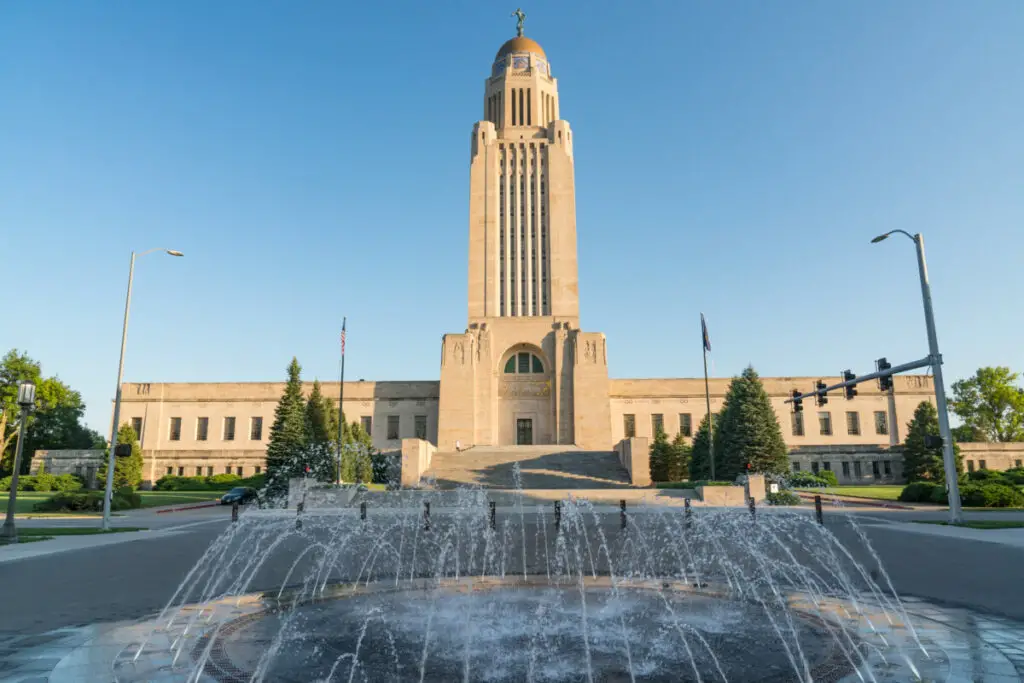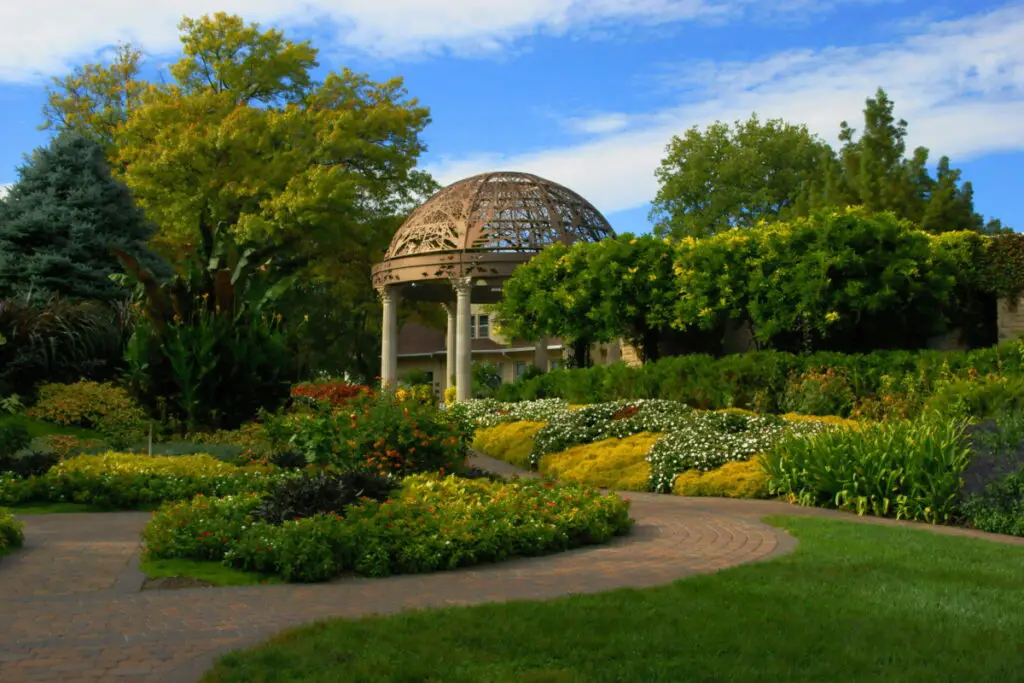
Politics is a source of a lot of controversies these days, and a lot of people want to live near people who have the same opinions as they do. Are the residents of Lincoln, Nebraska more likely to be liberal or conservative?
Lincoln, NE leans slightly liberal. The city voted for the Democratic candidate in three of the last six presidential elections, including the two most recent ones. Lancaster County is also slightly liberal, but the state of Nebraska is moderately conservative.
The political climate of a city has many factors and indicators. To figure out if Lincoln is a liberal or conservative city, we need to look at the results of the presidential elections, the local leaders, the policies, and the demographics.
Presidential Elections
The results of presidential elections in a city are a big indicator of the political climate. The two major political parties in the United States represent the liberal and conservative perspectives. The Democratic party has mostly liberal members and supports liberal policies.
The Republican party has mostly conservative members and supports conservative policies. If the majority of residents of a city vote for the Democratic candidate, the city is mostly liberal. If the majority of residents vote for the Republican candidate, the city is mostly conservative.
The candidate who won is important to consider, but it is also important to consider how much they won by. Looking at the difference between the percentage of the vote that was for the Democratic candidate and that for the Republican candidate is a good way to see this. If the difference is high, the city is firmly liberal or conservative. If the difference is low, the city is closer to being divided and is less liberal or conservative than a city with a high difference.
Nebraska is a moderately conservative state . The Republican candidate won in every presidential election since 2000. In all of those elections except for the 2008 election, the difference between the percentage of Democratic and Republican votes was between 15% and 35%. The lowest difference was 14.9% in 2008, and the highest was 33.2% in 2004.
. The Republican candidate won in every presidential election since 2000. In all of those elections except for the 2008 election, the difference between the percentage of Democratic and Republican votes was between 15% and 35%. The lowest difference was 14.9% in 2008, and the highest was 33.2% in 2004.
In the 2020 election, 62.4% of Nebraska residents voted for the Republican candidate, and 33.3% voted for the Democratic candidate. The difference between the two was 19%, the second lowest difference during that time frame after 2008.
Lancaster County, the county in which Lincoln is, is slightly liberal . The Democratic candidate won the county in 2008, 2016, and 2020, and the Republican candidate won in 2000, 2004, and 2012. The difference between the percentages was less than 15% in every election. The highest difference was 13.67% in 2004, and the lowest difference was 0.23% in 2016.
. The Democratic candidate won the county in 2008, 2016, and 2020, and the Republican candidate won in 2000, 2004, and 2012. The difference between the percentages was less than 15% in every election. The highest difference was 13.67% in 2004, and the lowest difference was 0.23% in 2016.
In the 2020 election, 52.34% of Lancaster County residents voted for the Democratic candidate and 44.58% voted for the Republican candidate. The difference was 7.76%, the third highest after 2004 and 2000.
Lincoln, like its county and unlike its state, leans slightly liberal . The Democratic candidate won in the city in three elections since 2000, including 2016 and 2020. The difference between the percentages of Democratic and Republican candidates was higher than 10% in 2000 and 2004 but was lower than 10% every other year. This means that, though the area is not solidly Democratic, it has grown more liberal in recent years, but could still be swayed to vote Republican.
. The Democratic candidate won in the city in three elections since 2000, including 2016 and 2020. The difference between the percentages of Democratic and Republican candidates was higher than 10% in 2000 and 2004 but was lower than 10% every other year. This means that, though the area is not solidly Democratic, it has grown more liberal in recent years, but could still be swayed to vote Republican.
From 2018 to 2021, there were 16,309 contributions to the Democratic party in Lincoln. This added up to $1,781,396. The Republican party only received 3,606 contributions during that time, which totaled $1,285,307. Though there were almost five times more contributions to the Democratic party, the Republican party received nearly the same amount of money; this is because the donations to the Republican party were about 3 times larger on average than those to the Democratic party.
Local Leaders

The local leaders of a city are representative of the city’s political climate. These are officials that the residents elected because of their beliefs and promises. Looking at the party affiliations, enacted policies, and campaign platforms of the local leaders of Lincoln can help us to know whether it is liberal or conservative.
Mayor
The mayor of Lincoln is an important elected official. The mayor represents the city in larger matters and has veto powers. They are responsible for proposing a budget, signing legislation, appointing certain government employees, and overseeing the operations of the city.
The current mayor of Lincoln is Leirion Gaylor Baird . She was elected in 2019 and will serve until 2023. She won the general election in 2019 with 54.5% of the vote. Her win was by 5,698 votes.
. She was elected in 2019 and will serve until 2023. She won the general election in 2019 with 54.5% of the vote. Her win was by 5,698 votes.
Mayor Baird has shown great support for efforts to protect the environment. She is the Chair of the Local Government Advisory Council for the US Environmental Protection Agency. Her initiative has had to do with environmental protection, education, and diversity.
Mayor Baird filed as a member of the Democratic party, which suggests a liberal affiliation. The initiatives she has supported also suggest a liberal mindset.
City Council
The Lincoln City Council is a board of elected officials that run the legislative aspect of government. The City Council is responsible for adopting the budget proposed by the mayor, approving those appointed by the mayor, imposing taxes, and creating or changing laws. There are seven city council members. Three of them are elected by the whole city. Four of the city council members are each elected by one of the four districts in the city.
is a board of elected officials that run the legislative aspect of government. The City Council is responsible for adopting the budget proposed by the mayor, approving those appointed by the mayor, imposing taxes, and creating or changing laws. There are seven city council members. Three of them are elected by the whole city. Four of the city council members are each elected by one of the four districts in the city.
The city council elections are nonpartisan, so the candidate is considered nonpartisan.
Policies
The policies that the residents in the city support are another indicator of the political climate. Some policies are more likely to be supported or opposed by liberals or conservatives. Fewer abortion laws, more gun control laws, and legal same-sex marriage are all most likely to be supported by liberals and opposed by conservatives.
Abortion
Abortions in Nebraska must be performed before 20 weeks post-fertilization unless there is life endangerment involved. The patient must receive counseling and an ultrasound at least 24 hours before an abortion. Health plans, public funding, private insurance policies, and the insurance policies for public employees cannot cover abortion except when life endangerment, rape, or incest are involved. The parents of a minor must consent first, and abortion clinics must meet strict standards.
unless there is life endangerment involved. The patient must receive counseling and an ultrasound at least 24 hours before an abortion. Health plans, public funding, private insurance policies, and the insurance policies for public employees cannot cover abortion except when life endangerment, rape, or incest are involved. The parents of a minor must consent first, and abortion clinics must meet strict standards.
In 2017, there were 7 facilities that provide abortions in Nebraska, 3 of which were clinics. 97% of Nebraska counties do not have a clinic, leaving 40% of Nebraska women without access to a clinic.
Lincoln residents tend to support lowering the number of abortion laws, allowing more access to abortion. This is consistent with a liberal perspective.
Gun Control Laws
In 2020, Nebraska had the 10th lowest gun death rate and the 12th lowest rate of crime in gun exports. Nebraska gun laws include gun owner licensing, domestic violence gun laws, and state database background checks. Nebraska gun laws don’t include universal background checks, assault weapons and large capacity magazine bans, concealed and open carry regulations, child access prevention laws, and lost/stolen firearm reporting.
gun owner licensing, domestic violence gun laws, and state database background checks. Nebraska gun laws don’t include universal background checks, assault weapons and large capacity magazine bans, concealed and open carry regulations, child access prevention laws, and lost/stolen firearm reporting.
Lincoln residents tend to support the current number of gun control laws. This is consistent with a conservative perspective.
Same-Sex Marriage
Same-sex marriage was legalized in Nebraska on June 26, 2015, and it was among the last states to do so. That day was when the Supreme Court mandate required all states to legalize same-sex marriage. Lincoln residents supported the legalization of same-sex marriage, which is consistent with a liberal perspective.
Demographics

The population of Lincoln is 290,505 people. The population density is 3,063 people per square mile. 49.9% of the population is female, and 50.1% of the population is male. The median age is 32.1, and the average number of people per household is 2.4.
of Lincoln is 290,505 people. The population density is 3,063 people per square mile. 49.9% of the population is female, and 50.1% of the population is male. The median age is 32.1, and the average number of people per household is 2.4.
The racial makeup of Lincoln is as follows:
of Lincoln is as follows:
- White: 80.6%
- Black: 4.3%
- Hispanic/Latino: 7.3%
- Asian: 4.6%
- Native American: 0.5%
- Hawaiian/Pacific Islander: 0.1%
- Two or More Races: 2.7%
- Other: 0.1%
47.5% of Lincoln residents are married, and 10.9% of residents are divorced. 32.4% of residents are married with children and 17.3% are single with children.
of Lincoln residents are married, and 10.9% of residents are divorced. 32.4% of residents are married with children and 17.3% are single with children.
The average income of Lincoln residents is $26,574 per year. The median household income is $49,794 per year. The unemployment rate in Lincoln is 2.9%. The sales tax rate in Lincoln is 7.2%, and the income rate in Lincoln is 6.8%.
of Lincoln residents is $26,574 per year. The median household income is $49,794 per year. The unemployment rate in Lincoln is 2.9%. The sales tax rate in Lincoln is 7.2%, and the income rate in Lincoln is 6.8%.
92.9% of Lincoln residents are high school graduates, and 22% are only high school graduates. 24.2% of residents have two-year degrees, 37.8% of residents have four-year degrees, 2.2% of residents have master’s degrees, and 2.5% of residents have professional degrees.
of Lincoln residents are high school graduates, and 22% are only high school graduates. 24.2% of residents have two-year degrees, 37.8% of residents have four-year degrees, 2.2% of residents have master’s degrees, and 2.5% of residents have professional degrees.
47.9% of Lincoln residents are religious. 46.9% are Christian, 0.2% are Jewish, 0.3% are of eastern faith, and 0.2% are affiliated with Islam.
of Lincoln residents are religious. 46.9% are Christian, 0.2% are Jewish, 0.3% are of eastern faith, and 0.2% are affiliated with Islam.
The rate of violent crime in Lincoln on a scale of 1 to 100 is 17.0. The rate of property crime in Lincoln on the same scale is 47.5. The rate of violent crime is lower than the national average, and the rate of property crime is higher than the national average.
in Lincoln on a scale of 1 to 100 is 17.0. The rate of property crime in Lincoln on the same scale is 47.5. The rate of violent crime is lower than the national average, and the rate of property crime is higher than the national average.
